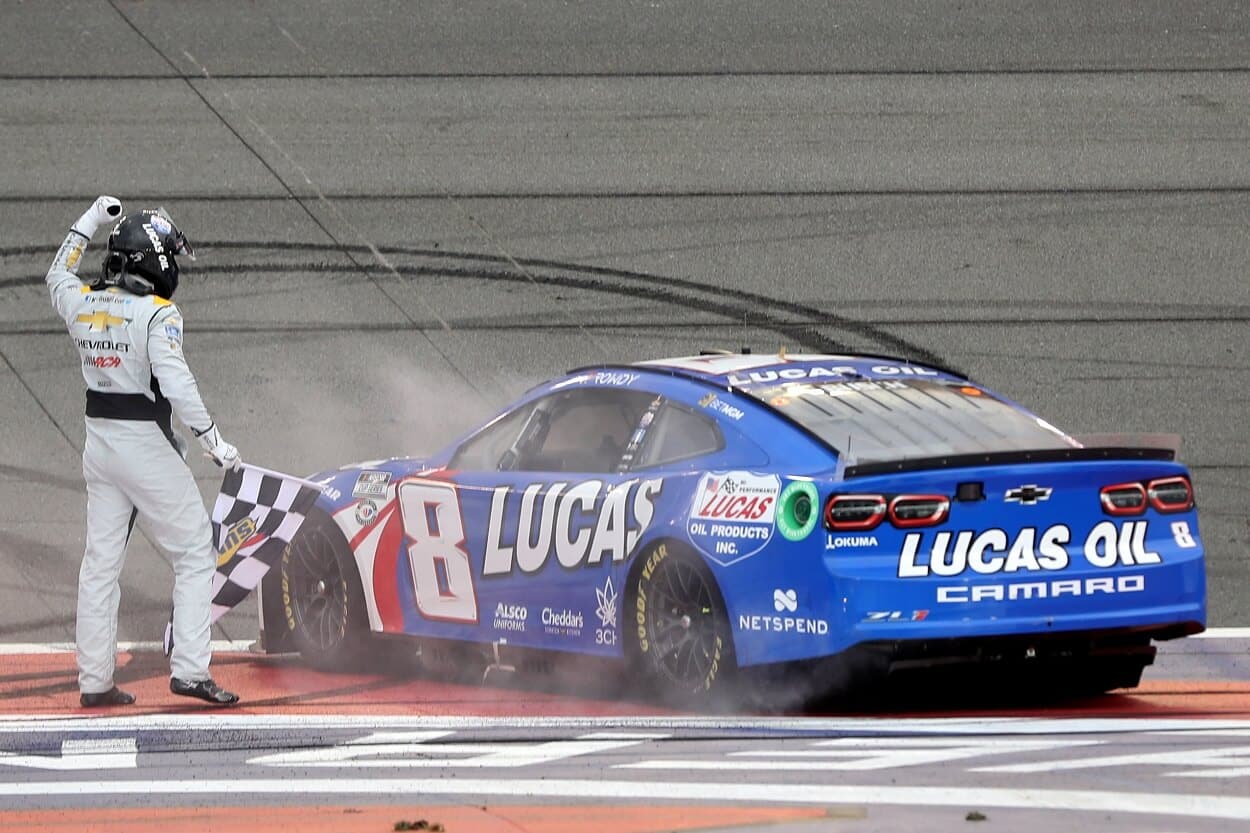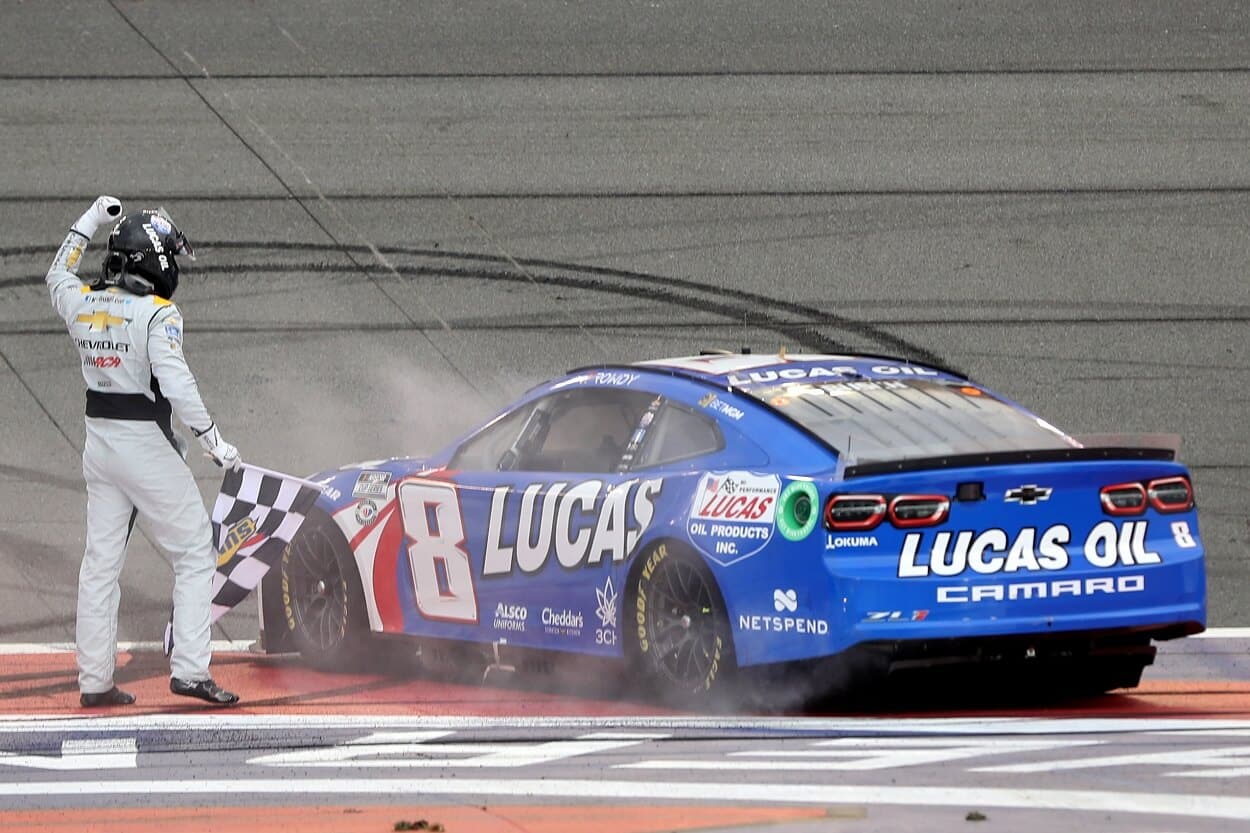NASCAR
Chevrolet Makes an Early Statement That It Will Be the Dominant Manufacturer of the 2023 NASCAR Cup Series Season

Chevrolet snapped its longest streak without a NASCAR Cup Series manufacturer’s championship in nearly 50 years in 2021, and it is already well on its way to a third consecutive title with one of the best starts to a Cup Series season possible through the first two races.
Ricky Stenhouse Jr. took the No. 47 Chevrolet to Victory Lane in the Daytona 500 for JTG Daugherty Racing to end a week at Daytona International Speedway that began with Hendrick Motorsports placing two Chevys on the front row for The Great American Race.
Chevrolet drivers also came to the front when it mattered at the end of the race. Stenhouse, Kyle Busch, and AJ Allmendinger combined to put a Chevrolet out front for 17 of the final 24 laps, including the last 16 circuits.
Of course, superspeedway races at Daytona are a different dynamic than the bulk of the Cup Series schedule. The draft does not have nearly the same dramatic effects at tracks other than Daytona, Talladega Superspeedway, and Atlanta Motor Speedway, where the entire field can stay in one giant pack.
Chevrolet drivers controlled the majority of the first intermediate-track race of the season
The 2.0-mile oval of Auto Club Speedway in Fontana, California, which hosted the second race of the season, provides a more accurate assessment of the quality of cars each team has prepared for the campaign. And Chevrolet passed that test with aplomb.
Busch drove away from the rest of the field on the final run of the 200-lap event to win his first race in the No. 8 Chevrolet for Richard Childress Racing, but a win for Chevrolet was rarely in doubt throughout the event.
Ross Chastain won both of the first two stages in the No. 1 Chevrolet for Trackhouse Racing en route to a race-high 91 circuits out front. Chevrolet drivers combined to lead 140 of the 200 laps and held each of the first four finishing positions.
Busch won the event despite incurring a pit-road speeding penalty early in the race. He was followed to the line by Chase Elliott in an HMS Chevy. Chastain ended up third, and his Trackhouse teammate Daniel Suarez recovered from a pit-road speeding penalty earlier in the race to finish fourth.
Chevrolet has started strong after nose modifications in the offseason

This success might not seem surprising, given Chevrolet is the two-time defending manufacturer’s champion. But extra variables entered the equation during the offseason when NASCAR approved body modifications for all Chevys, Fords, and Toyotas that compete in the series.
Specifically, each manufacturer received adjustments to the nose of its Cup Series cars. The changes were designed to help flatten the fronts of the cars, so they line up better at superspeedways for driving. But any revisions to that area of the cars can have unintended consequences to the downforce the cars are able to create.
The Chevrolet Camaro previously had a nose that came to a point in the center of the front of the new Next Gen car model NASCAR introduced for the 2022 season. That tip on the car made it more difficult for Chevrolet drivers to push the car in front of them on superspeedways compared to Ford Mustangs, which had a flatter nose.
The modifications for the current season also flattened the nose on the Chevrolet vehicles. And so far, it looks as if that change may have enhanced the ability of the Camaros to navigate traffic and cut through the air on high-downforce tracks such as Fontana.
Chevy has recently risen from a five-year slump
Overall balance had been an issue for Chevrolet with the previous car model and is perhaps one of the biggest reasons Ford and Toyota captured each manufacturer’s title from 2016-20, which marked the longest stretch that Chevrolet did not win the title since a 10-year stretch from 1962-71. But that was before the recognized Modern Era began in 1973.
Chevrolet won the first two manufacturer titles of the Modern Era and had not gone more than two years without that championship from 1973-2015. Chevrolet transitioned to the Camaro from the SS it had used since 2013, but Ford still won the manufacturer titles in 2018 and 2020, while Toyota grabbed its third such championship in a four-year span in 2019.
Chevrolet won 19 races each of the last two years, including a parity-driven 2022 season that featured a record-tying 19 different winners.
Now, the manufacturer has won the first two points-paying races to a season for the first time since 2014 and is poised to potentially reverse the parity from a year ago. Another telling test will come Sunday at the 1.5-mile Las Vegas Motor Speedway.
But Chevrolet has a chance to put Ford and Toyota teams on notice that they might have some work to do to catch up — if it hasn’t done so already.











